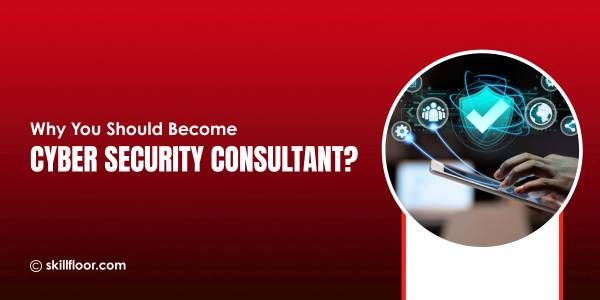Power of Data: Exploring Data Analytics Technologies
Discover the future of data analytics technologies, unlocking the potential of data to drive insights and innovation. Explore now!

Welcome to the world of data analytics, where cutting-edge technologies transform raw data into valuable insights. In this blog, we will take a journey into the realm of data analytics technologies and explore the tools that empower organizations to make data-driven decisions. From advanced algorithms to powerful visualization tools, let's discover the fascinating world of data analytics technologies and their impact on business success.
Machine Learning and Artificial Intelligence
Machine Learning (ML) and Artificial Intelligence (AI) are like the dynamic duo of data analytics. They enable computers to learn from data, identify patterns, and make predictions or decisions without explicit programming. ML algorithms analyze vast amounts of data, uncover hidden patterns, and generate accurate predictions. AI techniques, on the other hand, simulate human intelligence to perform tasks such as natural language processing, image recognition, and sentiment analysis. Together, ML and AI revolutionize data analytics by automating processes, enhancing accuracy, and enabling proactive decision-making.
Data Visualization Tools
Data visualization tools are like artists that transform complex data into meaningful visuals. They help present data in an intuitive and visually appealing manner, making it easier for users to comprehend and interpret information. With interactive charts, graphs, and dashboards, data visualization tools allow users to explore data, spot trends, and gain insights quickly. These tools enhance data storytelling, facilitate effective communication, and empower organizations to make informed decisions based on visual analysis.
Big Data Technologies
Big Data technologies are like the superpowers of data analytics. They enable organizations to capture, store, process, and analyze massive volumes of data. Technologies like Apache Hadoop and Apache Spark provide distributed computing frameworks, allowing parallel processing of data across multiple nodes. These technologies make it possible to handle diverse data types, such as structured, unstructured, and semi-structured data. Big Data technologies unlock the potential of large-scale data analytics, enabling organizations to extract valuable insights from complex and voluminous datasets.
Cloud Computing
Cloud computing is like the limitless sky that powers data analytics. It provides on-demand access to computing resources, storage, and applications over the internet. Cloud-based analytics platforms offer scalability, flexibility, and cost-efficiency, as they eliminate the need for on-premises infrastructure and maintenance. Cloud computing allows organizations to process and analyze data faster, collaborate seamlessly, and leverage advanced analytics capabilities without investing in extensive hardware or software resources.
Data Integration and ETL Tools
Data integration and Extract, Transform, Load (ETL) tools are like the bridges that connect disparate data sources. They enable organizations to gather data from various systems, cleanse and transform it into a consistent format, and load it into a centralized data repository for analysis. These tools streamline the data preparation process, ensuring data quality and reliability. With data integration and ETL tools, organizations can harness the power of unified data for analysis and gain a holistic view of their operations.
Natural Language Processing (NLP)
Natural Language Processing is like teaching computers to understand and interpret human language. It involves techniques that enable machines to analyze, understand, and generate human language in a meaningful way. NLP powers applications like sentiment analysis, chatbots, and language translation. By leveraging NLP, organizations can extract valuable insights from textual data and enhance customer interactions.
Data Mining
Data mining is like digging deep into datasets to discover hidden patterns, relationships, and trends. It involves applying statistical and machine learning techniques to extract valuable knowledge from large volumes of data. Data mining techniques, such as association rules, clustering, and decision trees, help organizations uncover valuable insights and make informed decisions.
Predictive Analytics
Predictive analytics is like crystal ball gazing, but with data. It involves using historical data and statistical modeling techniques to predict future outcomes or behaviors. By analyzing patterns and relationships in the data, predictive analytics helps organizations make accurate forecasts and anticipate future trends. It enables proactive decision-making and empowers businesses to optimize their strategies.
Data Warehousing
Data warehousing is like building a centralized repository for storing and managing large volumes of data. It involves extracting data from multiple sources, transforming it into a consistent format, and loading it into a data warehouse. Data warehousing provides a unified view of data, enabling organizations to analyze and report on their operations effectively. It supports decision-making by providing a single source of truth for data analysis.
Prescriptive Analytics
Prescriptive analytics is like having a personal data advisor. It goes beyond descriptive and predictive analytics to provide recommendations and suggest actions based on data analysis. By considering multiple scenarios and optimization algorithms, prescriptive analytics helps organizations make data-driven decisions and optimize outcomes. It empowers businesses to take proactive steps to achieve their goals and drive success.
Certainly! Here are a few more points on data analytics technologies:
Real-time Analytics
Real-time analytics is like having a pulse on your data as it happens. It involves processing and analyzing data in real-time or near real-time, enabling organizations to make immediate decisions based on up-to-date information. Real-time analytics is crucial in domains such as financial trading, IoT applications, and fraud detection, where timely insights are essential for effective decision-making.
Data Visualization and Reporting Tools
Data visualization and reporting tools are like artists that bring data to life. They allow users to create visually appealing charts, graphs, and interactive dashboards to present data in a clear and understandable manner. These tools make it easier for stakeholders to interpret complex data, spot trends, and gain actionable insights. Data visualization enhances communication, facilitates data-driven discussions, and enables organizations to make informed decisions.
Cloud-based Analytics Platforms
Cloud-based analytics platforms offer a flexible and scalable environment for data analysis. They provide organizations with the ability to store, process, and analyze large volumes of data in the cloud. Cloud platforms offer benefits such as cost-effectiveness, on-demand resource allocation, and easy collaboration. They eliminate the need for extensive infrastructure setup and maintenance, allowing organizations to focus on data analysis rather than IT management.
Data Governance and Security
Data governance and security are critical aspects of data analytics. Effective data governance ensures that data is accurate, reliable, and compliant with regulations. It involves establishing policies, procedures, and controls for data management, data quality, and data privacy. Robust data security measures protect sensitive data from unauthorized access, ensuring the integrity and confidentiality of data throughout the analytics process.
Natural Language Query and Processing
Natural Language Query (NLQ) and Processing (NLP) enable users to interact with data using human language. NLQ allows users to ask questions and retrieve insights from data using natural language queries, without the need for complex programming or SQL queries. NLP techniques help in understanding and interpreting unstructured text data, such as customer reviews or social media posts, to extract valuable insights and sentiments.
In a nutshell, Data analytics technologies have transformed the way organizations leverage data to gain insights and drive business success. From machine learning and AI that uncover hidden patterns to data visualization tools that communicate complex information effectively, these technologies empower organizations to make data-driven decisions and gain a competitive edge. Big Data technologies, cloud computing, and data integration tools further enhance the capabilities of data analytics, enabling organizations to process and analyze vast amounts of data efficiently. Embrace these data analytics technologies, unleash the power of your data, and let them propel your organization towards a brighter future. Happy exploring and analyzing!



























































